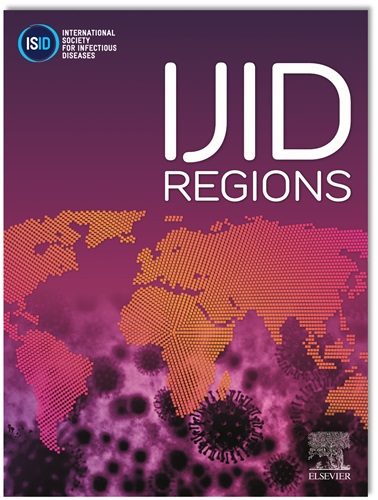研究一种不可知的宏基因组病毒发现工具,并评估离子激流与牛津纳米孔技术测序的性能
IF 4.8
2区 医学
Q1 INFECTIOUS DISEASES
引用次数: 0
摘要
新出现和再出现的病毒是一个全球性的健康问题。从历史上看,这类病毒是通过有针对性的方法识别出来的,这一直是诊断的黄金标准。不幸的是,这些方法仅限于已知病原体,因此不足以监测“未知”病毒。因此,需要一种能够识别已知、新型和意外病毒的技术。利用复制脱氧核糖核酸(cDNA)和扩增片段长度多态性(AFLP)(也称为VIDISCA)进行病毒发现是一种宏基因组学方法,它对病毒序列进行非特异性富集,然后使用下一代测序(NGS)进行病毒发现。VIDISCA已被用于发现几种以前未知的病毒,包括人类冠状病毒(HCoV) NL63和ntwewe病毒。VIDISCA以前依赖于离子激流NGS,我们假设牛津纳米孔技术(ONT)更容易使用,可以和离子激流测序一样有效。因此,我们开发并验证了带有ONT的VIDISCA,并将其与Ion Torrent NGS进行了比较。方法将不同样本类型组成的文库分成两个相同的文库,分别在ONT和Ion Torrent平台上进行测序。样本中含有已知的病毒病原体,对其进行盲法处理,作为“未知”样本进行病毒发现。用随机引物从去除rRNA互补序列的核酸提取物中合成cDNA。第二链合成后,DNA用限制性内切酶酶切并连接接头,作为PCR富集的引物位点。然后对模板进行测序,并将输出文件与蛋白质数据库进行比对,包括人类、哺乳动物、昆虫、蜱虫和禽流感病毒序列。两种NGS平台在鉴定含有人类乳腺病毒(hav)、人类免疫缺陷病毒(HIV)、戊型肝炎病毒(HEV)、HCoV-NL63和无病毒样本的文库中的病原体方面表现相似。ONT和离子激流平台都没有对hav进行测序。在一个样本中,这两个平台也都遗漏了HEV。两个平台都成功识别了所有其他病毒。总的来说,ONT的表现与离子激流相似。结论和相关证据表明,在Ion Torrent和ONT测序平台上的结果相似。ONT测序具有更快的周转和低测序足迹与类似的成本估计的优势。未来的计划包括检测残留的患者样本,其中一些病毒通常未被诊断出来(如脑脊液),以及哨兵物种(如大鼠和鼩鼱),作为大流行防范和新病毒发现的一部分。如有必要,将进行额外的工作,如基因组引物行走,以对用VIDISCA-NGS鉴定的新发现病毒进行全基因组表征。本文章由计算机程序翻译,如有差异,请以英文原文为准。
Investigating an agnostic metagenomic virus discovery tool and evaluating the performance of Ion Torrent versus Oxford Nanopore Technology sequencing
Introduction and motivation
Emerging and re-emerging viruses are a global health concern. Historically, such viruses have been identified through targeted approaches, which has been the gold standard in diagnosis. Unfortunately, these approaches are limited to known pathogens and thus inadequate for the monitoring of “unknown” viruses. Therefore, there is a need for a technology that can identify known, novel and unexpected viruses.
Virus discovery using copy deoxyribonucleic acid (cDNA) and amplified fragment length polymorphism (AFLP) (also called VIDISCA) is a metagenomics approach that non-specifically enriches for viral sequences and then uses next generation sequencing (NGS) for virus discovery. VIDISCA has been used for the discovery of a several previously unknown viruses, including human coronavirus (HCoV) NL63 and Ntwetwe virus.
VIDISCA has previously relied on Ion Torrent NGS, and we hypothesised that Oxford Nanopore Technology (ONT), which is easier to use, could be as effective as Ion Torrent sequencing. Therefore, we developed and validated VIDISCA with ONT and this compared to Ion Torrent NGS.
Methodology
A library made-up of different sample types was split into two identical libraries to sequence on the ONT and Ion Torrent platforms. The samples contained known viral pathogens which were blinded and treated as “unknown” samples for viral discovery. cDNA was synthesized with random primers from nucleic acid extracts that were depleted of rRNA complementary sequences. After second strand synthesis, DNA was digested with a restriction enzyme coupled with adaptor ligation, which served as priming sites for PCR enrichment. Templates are then sequenced, and output files were mapped against protein databases including human, mammal, insect, tick and avian virus sequences.
Findings
The two NGS platforms performed similarly in identifying the pathogens in the prepared library that contained Human Mastadenovirus (HAdV), Human Immunodeficiency virus (HIV), Hepatitis E virus (HEV), HCoV-NL63 and a virus free sample. Neither the ONT nor Ion Torrent platforms sequenced the HAdV. Both platforms also missed HEV in one sample. All other viruses were successfully identified by both platforms. Overall, ONT performed similarly to Ion Torrent.
Conclusion and relevance
VIDISCA performed on Ion Torrent and ONT sequencing platforms has displayed similar Results. ONT sequencing has the advantage of a more rapid turnaround and low sequencing footprint with a similar cost estimation.
Future plans include the testing of residual patient samples where some viruses are often undiagnosed (such as cerebrospinal fluid) as well as sentinel species (such as rats and shrews) as a part of pandemic preparedness and novel virus discovery. If necessary, additional work, such as genome primer walking, will be conducted for full-genome characterization of newly discovered viruses identified with VIDISCA-NGS.
求助全文
通过发布文献求助,成功后即可免费获取论文全文。
去求助
来源期刊
CiteScore
18.90
自引率
2.40%
发文量
1020
审稿时长
30 days
期刊介绍:
International Journal of Infectious Diseases (IJID)
Publisher: International Society for Infectious Diseases
Publication Frequency: Monthly
Type: Peer-reviewed, Open Access
Scope:
Publishes original clinical and laboratory-based research.
Reports clinical trials, reviews, and some case reports.
Focuses on epidemiology, clinical diagnosis, treatment, and control of infectious diseases.
Emphasizes diseases common in under-resourced countries.

 求助内容:
求助内容: 应助结果提醒方式:
应助结果提醒方式:


